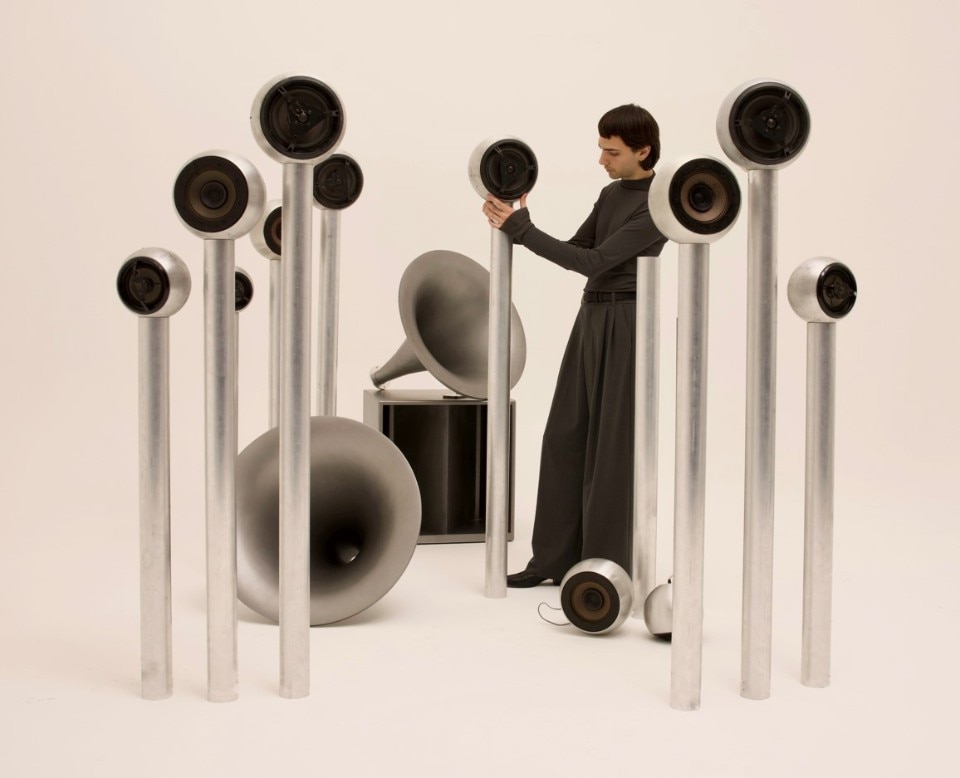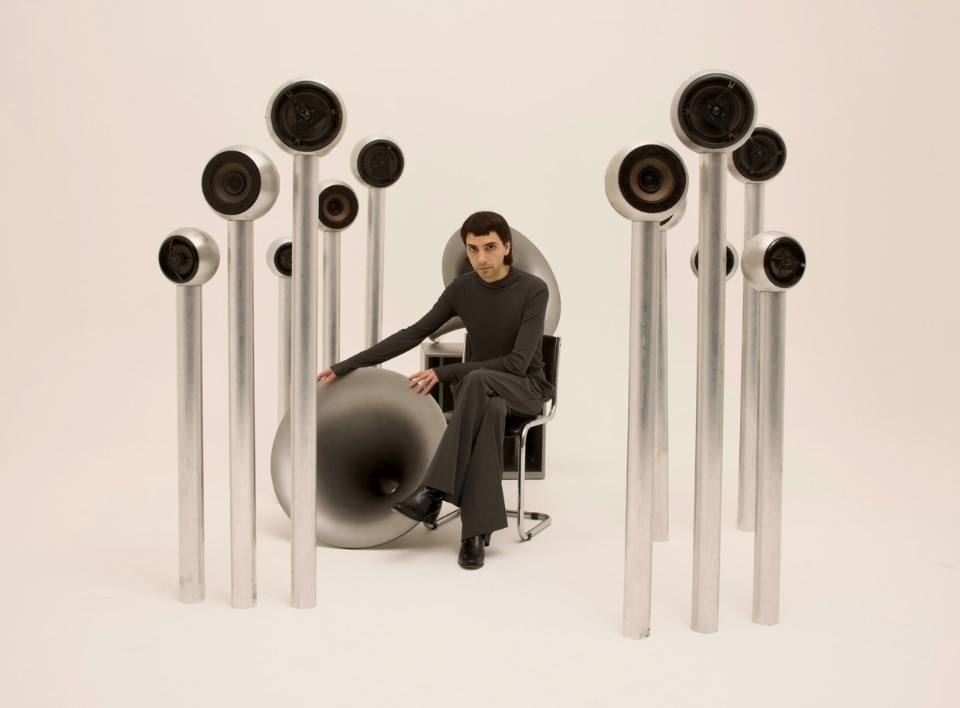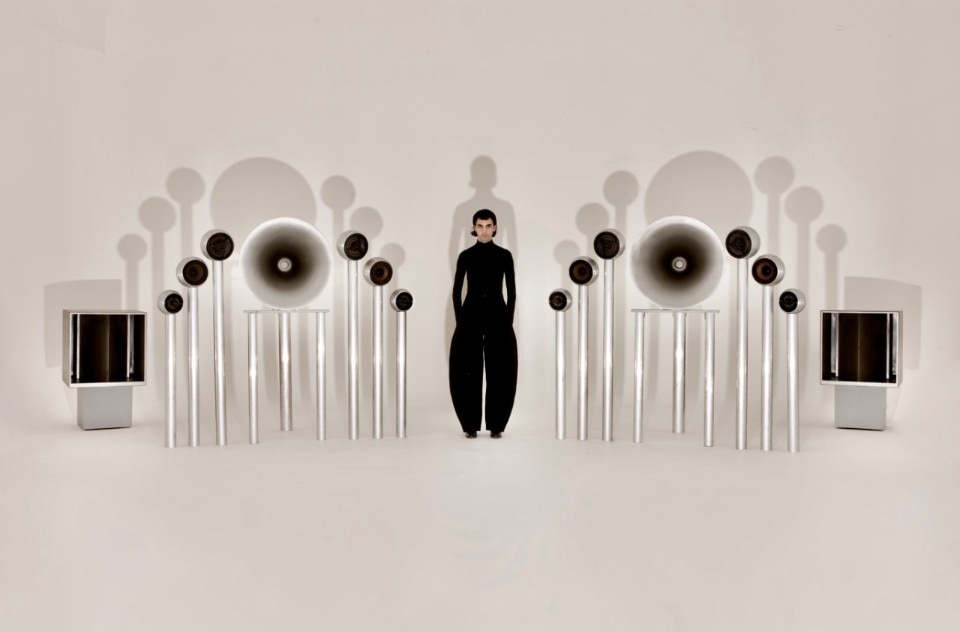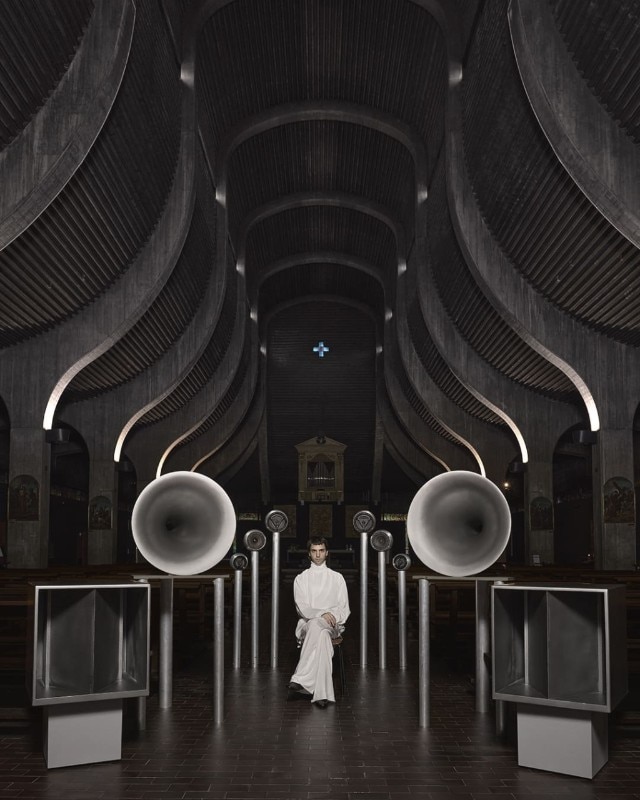For the first time in its over 50-year history, electronic music will cross the threshold of San Nicolao della Flue, the striking modernist church that commands the skyline of Milan’s Forlanini district, in the South East of the city.
The architectural landmark has been chosen by Neuf Voix, a 1994-born composer, to host the world premiere of his latest work, Frequenze per più dimensioni (Frequencies for multiple dimensions). The piece is an exploration of the possibilities of sound and voice, aligning seamlessly with the stylistic hallmarks and auditory experiments of musique concrète.
The concrète element – both in its tangible sense and its English meaning of “concrete” as cement – serves as the implicit fil rouge between the composer’s performance and the building itself. A modernist bèton brut spaceship that seems to have landed, fittingly, in the wake of the 1969 Moon landing, within the then still-expanding Forlanini district.

The original project, dating back to 1962, was entrusted to architect Fritz Metzger, who shared his Swiss origins with the saint to whom the church was dedicated – a 15th-century mountaineer and former soldier who became a pilgrim following his religious calling. Left incomplete, the project was later taken up by Ignazio Gardella and designer-architect Anna Castelli Ferrieri, whose vision came to fruition between 1968 and 1970.
To define the identity of Gardella and Ferrieri’s design is the sail-like roof of the three naves, supported by curved exposed-concrete portals that, in their imposing sinuousness, evoke the hull of Noah’s Ark.
The same modernist elegance, dynamic despite the solidity of the materials, is evident in the interior details, such as the narrow slits that filter light and, more notably, in the tabernacle and baptismal font in gneiss, designed by Father Costantino Ruggeri.
It was through the initiative of the clergyman that spirituality at San Nicolao della Flue found itself in dialogue with design and art, as exemplified by the 134 stained-glass windows created by the painter and ceramicist Pino Grioni.

The photographs from the 1960s treasured in the parish archive are particularly evocative. They show a time when masses were celebrated at the construction site: the white dresses of the girls being confirmed, the makeshift altar, and a tall steel cross, almost like a pylon, surrounded by the towering blocks incarnating the post-War Italian economic miracle.
Today, the bond between design and art within the church finds a new chapter in the Acusmonium Odae, a sound diffusion system designed and created by the artist himself. Its sinuous traits engage in dialogue with the futuristic elements of the church. The system allows sounds to travel through the space in a three-dimensional and immersive way, offering listeners a deeply immersive experience.
The research on the quality and diffusion of sound is indeed at the heart of Neuf Voix's work, which in the recent past has already made use of another ecclesiastical setting – the auditorium of San Fedele, Milan – for one of its performances. This adds on to the participation in the Venice Biennale Music Festival, as well as a series of live soundtracking projects, such as the FW 24 Ann Demeulemeester runway show at Paris Fashion Week.

The performance seems, therefore, to suggest a return of experimental music in religious settings. A new chapter in a long story that, in Italy, can be traced back to April 1966, when in the Borromini Hall of the Oratory of San Filippo Neri in Rome – in the aftermath of the Second Vatican Council – the Church opened the liturgical space to electric guitars played by a series of beat and garage bands in what came to be known as “La messa dei giovani”, the mass for young people.
The music performance Frequenze per più dimensioni by Neuf Voix, now sold out, will take place on Thursday, November 28 at the San Nicolao della Flue church, Milan.
Opening image: Neuf Voix with its Acusmonium Odae inside San Nicolao della Flue, the church designed by Ignazio Gardella and Anna Castelli Ferrieri. Photo Inessa Arvisire









